Looking for Fruit Trees that Grow in Ohio? These varieties thrive in Buckeye State’s unique climate and will bless you with juicy goodness!
Ohio straddles the line between a continental climate in the north and a subtropical climate in the south. According to the region, it experiences all four seasons in wavering levels of intensity: cold, frosty winters, hot and humid summers, and a wholesome spring and fall. We share the best fruit trees to grow in Ohio across its climes and soil types!
Since Ohio is divided into three subzones, 5b, 6a, 6b, and 7a, the state falls completely within zone 6. Therefore, any type of fruit that grows well in Zone 6 can be grown here with ease!
Fruit Trees that Grow in Ohio
1. Pawpaw
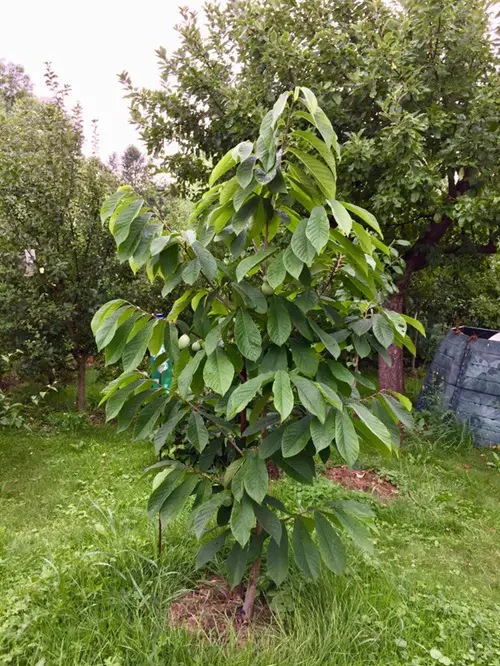
Botanical Name: Asimina triloba
USDA Zones: 5-8
Touted as Ohio’s best-kept secret, this little-known native fruit has slowly been making a resurgence among local gardeners. With more protein than regular fruits, this is the largest fruit endemic to the United States. It has a creamy, custard-like texture and a sweet flavor similar to banana, mango, and pineapple.
Growing naturally in moist areas like bottoms of gullies, stream banks, and vertical hillsides, it thrives in well-draining soil rich in organic matter and fruits in summer.
2. Apple 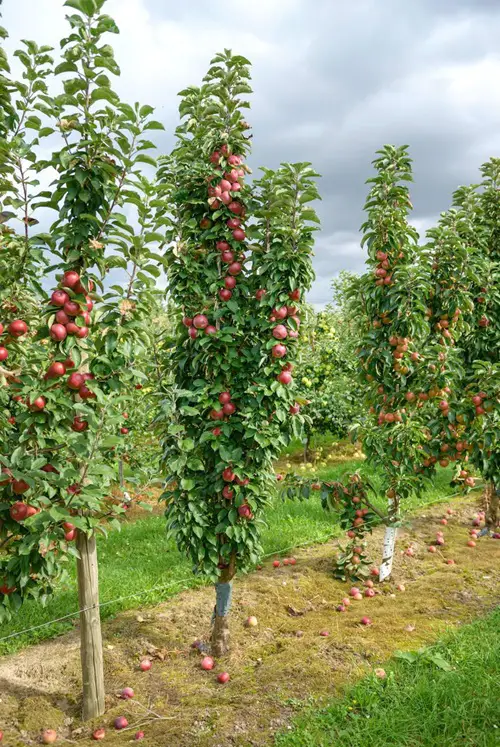
Botanical Name: Malus domestica
USDA Zones: 3-8
Ohio is one of the top ten producers of apples in the US. It offers up to 50 varieties, including several Ohio originals, each with its own distinct flavor, texture, and appearance. Choose disease-resistant varieties like Gala, Crimson Crisp, Ida Red, Honey Crisp, and Fuji.
Plant apple trees in full sun in well-draining sandy loam to clay soil that is slightly acidic to neutral.
3. Cherry

Botanical Name: Prunus avium
USDA Zones: 5-7
Ohio’s cherry season falls in summer when the weather is hot and sunny! Regions around Lake Erie, with mild winters, cool summers, and sandy loam soil, produce sweet cherries like Bing and Rainier, with a longer growing season.
And further central and south, with sharper winters and summers, hardy tart varieties like Montmorency grow well.
4. Kiwi
Botanical Name: Actinidia
USDA Zones: 4-9
Unlike the regular kiwi you find in supermarkets, hardy kiwi (Actinidia arguta) and Arctic kiwi (Actinidia kolomikta) are better suited to withstand the cold in Central and Northern Ohio.
Hardy kiwis can grow up to six feet a year, and flowers are borne on the previous year’s wood. Remember to prune well before the growing season in spring and clear out any of the wood that fruited earlier.
5. American Chestnut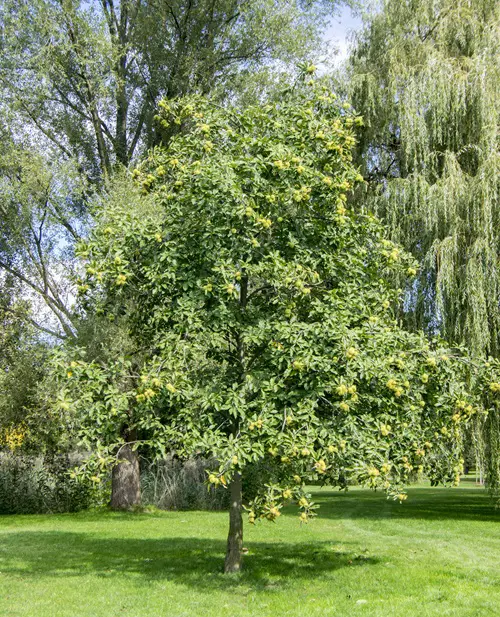
Botanical Name: Castanea dentata
USDA Zones: 4-9
In Ohio, the American Chestnut primarily flourishes in the eastern half of the state, where the soils are more acidic. This tree was significant for Native Americans, who relied on its nuts as a staple food. Additionally, the wood is used to craft furniture, musical instruments, crates, and tannins.
Grow this tree in deep, moist, acidic soil in full sun.
6. Serviceberry 
Botanical Name: Amelanchier arborea
USDA Zones: 4-7
Also known as Juneberry, this small tree grows in slopes and forests. Though the thicket serviceberry is not native to Ohio, its close relative, the downy serviceberry, is native and can be seen throughout the state.
This fruit tree grows extensively in Ohio except in regions with limestone-based soil, particularly the western parts. Several other species and hybrids of serviceberry also thrive in the area.
7. American Persimmon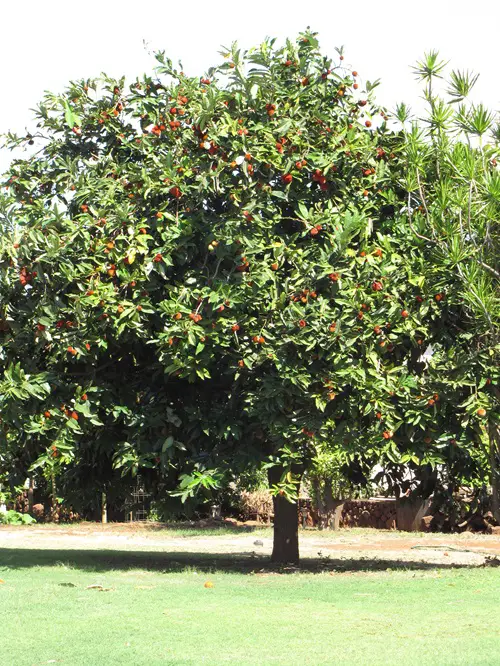
Botanical Name: Diospyros virginiana
USDA Zones: 4-9
American Persimmon is a cold-hardy tree that produces sweet little orange fruits and grows well even in the harsh winter-prone bits of Ohio. Reaching heights of 50 feet, it prefers well-draining soil that is slightly acidic to neutral. Persimmon trees hate wet feet!
8. Pear
Botanical Name: Pyrus communis
USDA Zone:6
European pear varieties like Bosc and Bartlett are cold-hardy and produce wonderful, large fruits in different regions in Ohio. Pear trees do well in well-draining, deep, fertile soil. Another one, Callery, grew wildly in the region until it was banned in 2023 due to its invasive nature.
Pears prefer well-draining sandy loam soil rich in organic matter and consistent watering during dry spells.
9. American Plum
Botanical Name: Prunus americana
USDA Zones: 3-8
American or Wild Plum is available around Ohio. It is native to much of the eastern and central US and produces fragrant, white blossoms that appear in early spring. Like other members of the rose family, the American plum can adjust to a range of growing conditions. Grow the tree in full sun in well-draining soil.
10. Mulberry 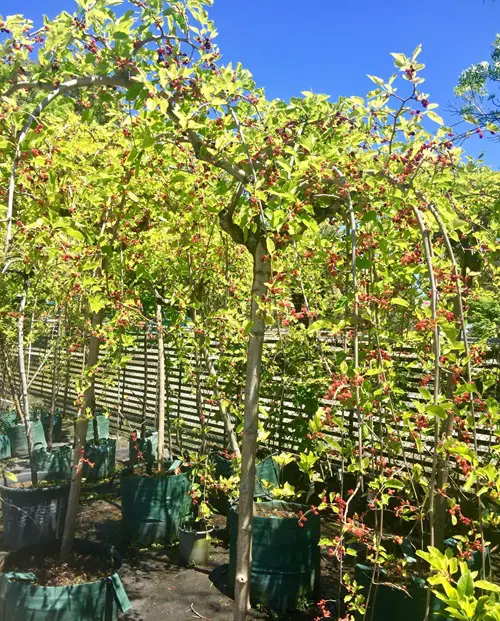
Botanical Name: Morus alba
USDA Zones: 4-8
Mulberry grows naturally in several parts of the eastern US, including most of Ohio. It typically grows along fencerows in neglected areas and various open rural areas. However, it is not shade-tolerant and rarely grows in forested areas.
It needs at least 6-8 hours of full, direct sun, regular watering during dry periods, and well-draining, organic-rich soil.
11. Black Walnut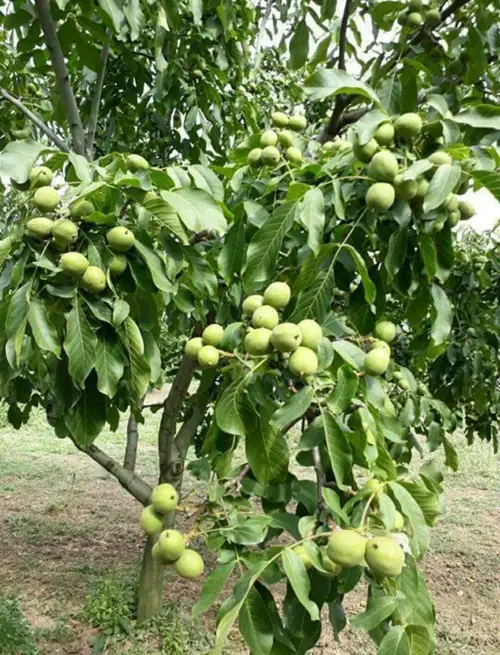
Botanical Name: Juglans nigra
USDA Zones: 4-9
This fast-growing tree is distributed throughout Ohio and is common in the Northeast region of the state. It flourishes in moist bottomlands and open fields and spreads to different habitats because squirrels bury its nuts!
Growing up to 80 feet tall, black walnuts prefer moist, well-draining soil in sunny areas.
12. Crabapple
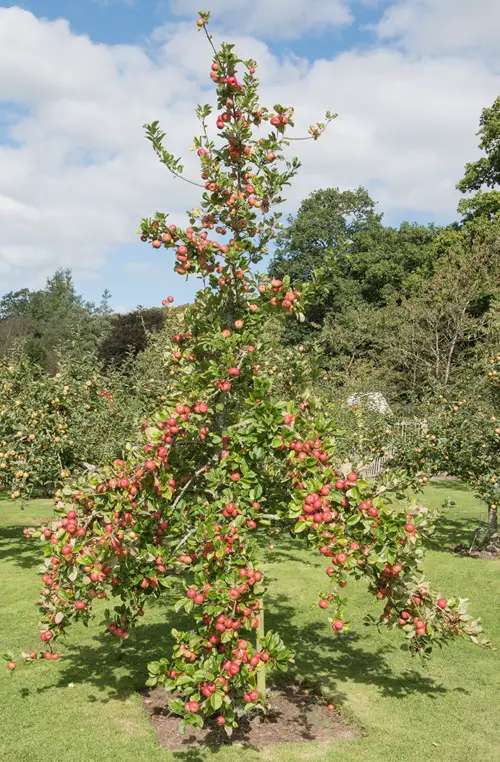
Botanical Name: Malus coronaria
USDA Zones: 4-8
Also popular as sweet or wild crabapple, this North American native fruit grows abundantly in Ohio. Others, like flowering crabapple and hardy varieties, also grow well in the region. Producing sweet, tarty yellow to crimson fruits, it needs at least 6-8 hours of full, direct sun daily and well-draining, rich soil that is loam, clay, or sandy.
13. Nectarine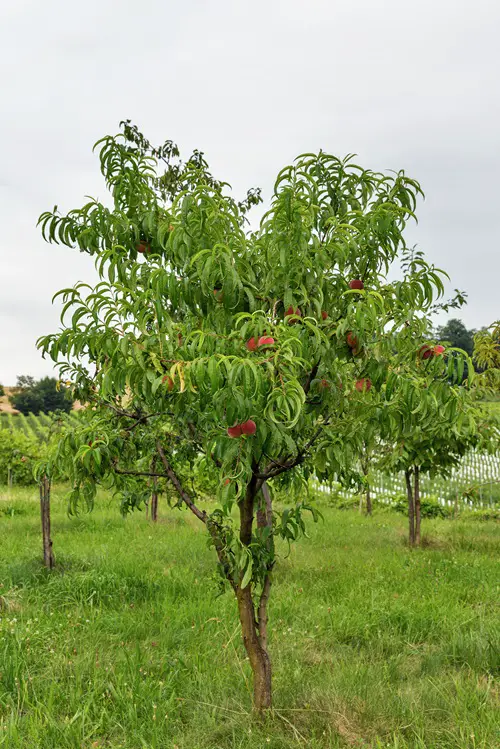
Botanical Name: Prunus persica var. nucipersica
USDA Zones: 5-9
Another fruit tree to grow in your yard in Ohio is the sweet and tangy nectarine. It needs dense soil and plenty of water twice a week until there is good rainfall. Plant nectarines against a south-facing fence or wall, and the tree will work as a fan; it will soak the heat and receive heat to ripen the fruit.
14. Elderberry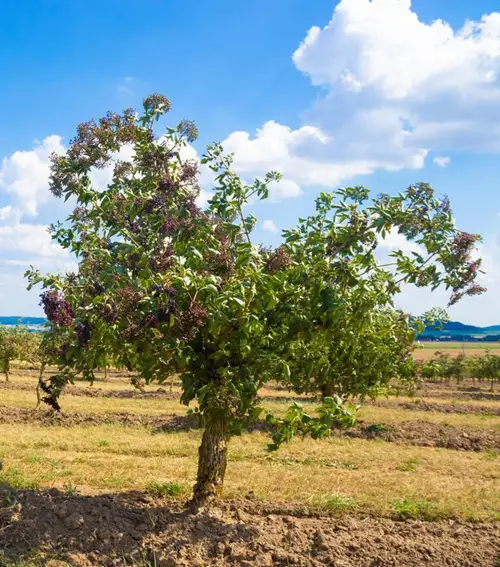
Botanical Name: Sambucus canadensis
USDA Zones: 4-9
Elderberry is a native deciduous shrub that can reach up to 8-12 feet tall and has an open, arching growth habit. It produces clusters of tiny, dark purple berries that are filled with antioxidants. This tree occurs naturally near waterways, farmland, and roads.
It grows best in areas with full sun to light shade in well-draining, moist, acidic soil.
15. Peaches
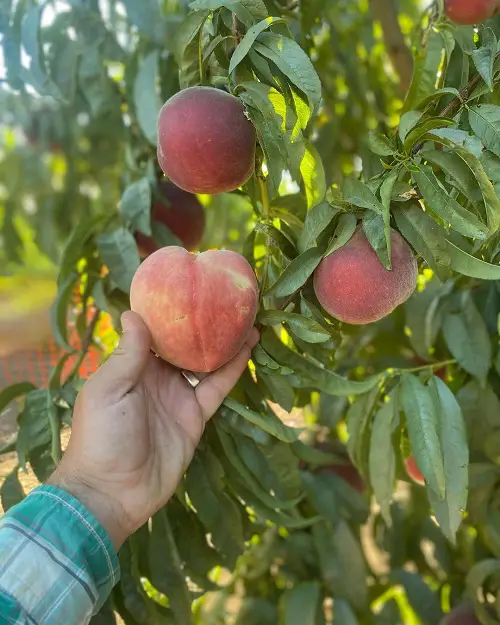
Botanical Name: Prunus persica
USDA Zones: 5-9
Like nectarines, peaches grow well in Ohio. Redhaven, a popular variety often considered the gold standard for peaches, is cold-hardy and well-suited to the state’s oscillating seasons. Peaches, like nectarine, need a specific cold-hours quota to break dormancy, which this region provides.
It grows well in full sun and well-draining, sandy loam soil.



